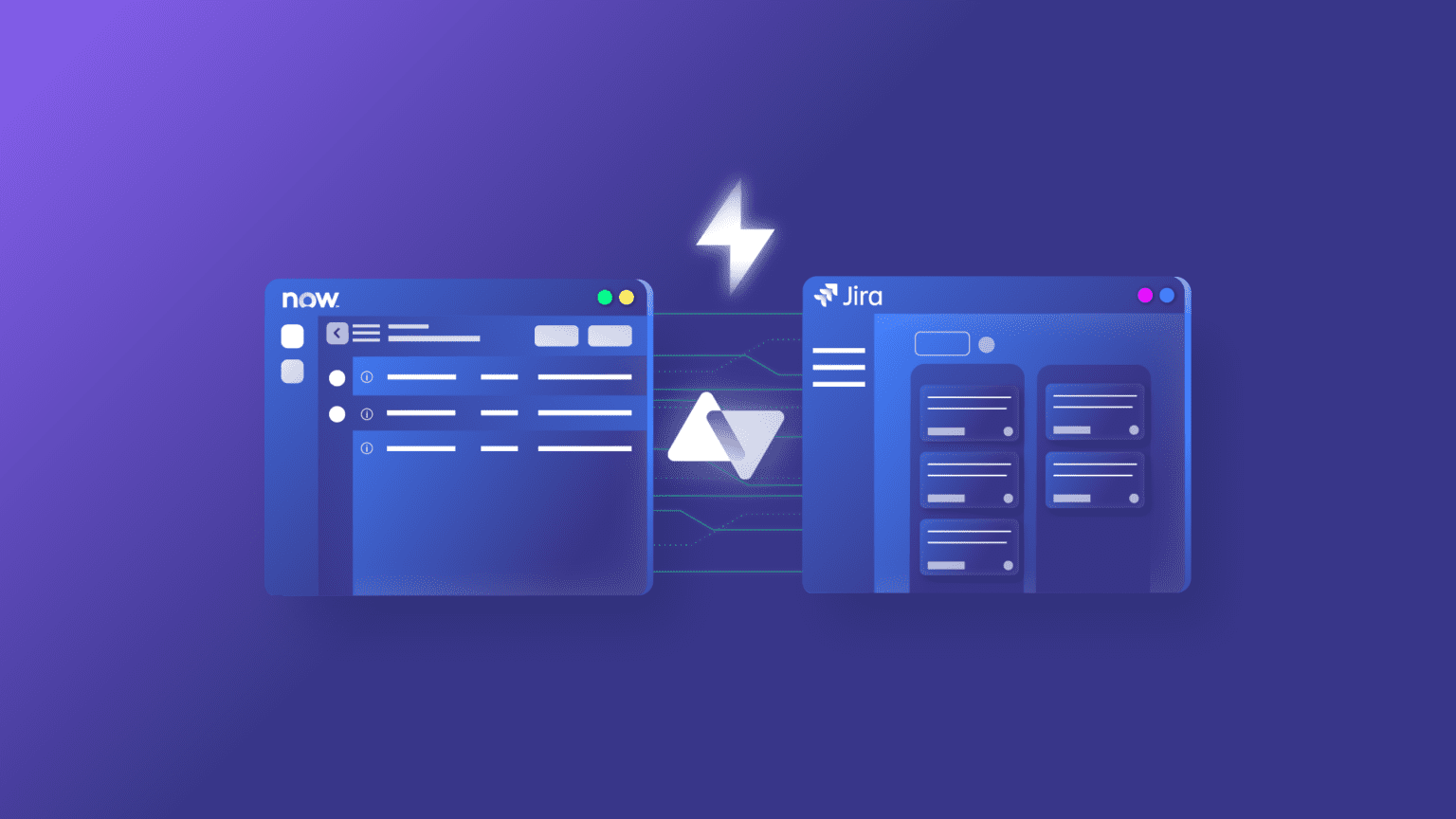This article was originally published in the Atlassian Community.
Organizations using ServiceNow and Jira Data Center usually find it daunting to set up an integration between their tools. We helped one such organization solve its challenge of implementing workflow orchestration, managing multiple intricate relationships, and much more with a ServiceNow Jira integration.
Exalate came to their rescue to create a bridge that could hold all their integration requirements together without affecting their daily business operations.
Understanding the Challenge
Over the call, the delivery manager explained their integration scenario to us.
They use ServiceNow as their central hub for receiving various customer requests, including incidents, service requests, HR inquiries, and more.
On the other side, their development team relies on Jira DC to manage software development life cycle (SDLC) tasks across numerous projects.
This duality can lead to several issues:
- Lack of visibility: With work dispersed across two separate platforms, gaining a consolidated view of all the organization’s activities is challenging.
- Duplication of effort: Maintaining data consistency between SNOW and Jira often involves double entries, copying, and pasting information, leading to inefficiency.
- Real-time data sharing: The need to ensure that the required data: comments, custom fields, attachments, etc. is consistently synchronized between the public ServiceNow instance and the private Jira DC instance.
They were looking for a solution that could overcome the above challenges and help them implement:
- Real-time two-way sync between their ServiceNow and Jira instances
- Orchestrate workflows between their service and development teams
- Connect public instances with instances behind firewalls
- Keep private conversations private
- Impersonate comments exchanged between ServiceNow and Jira
- Sync multiple ServiceNow entities like incidents, CMDB, change requests, problems, etc.
- Sync custom fields between Jira and ServiceNow
Exalate: A Tailored Solution
Exalate provides a flexible and customizable solution to these integration challenges.
Here’s how it can help their organization:
- Customization: Exalate empowers you with its scripting engine that uses Groovy scripts. This flexibility allows you to adapt the synchronization process to your unique needs. As Deepak, the Account manager at Exalate, mentions, “More or less anything is possible if you write a piece of code for it.”
- Bi-directional ongoing sync: Exalate offers a full 2-way sync, giving you the freedom to choose the direction of your synchronization. You can start small and scale your integration as your needs evolve.
- Real-time sync: Exalate’s default mode is real-time sync, ensuring that data is updated promptly between public and private instances of Jira DC. This includes attachments, descriptions, summaries, and even historical data migration for bulk operations.
- Versatility: Exalate is not limited to SNOW and Jira DC integration. It’s versatile enough to address various use cases, such as project collaboration, and service management integration with external partners using different ITSM tools like Zendesk and much more. It also supports multiple popular platforms like Azure DevOps, Jira Cloud, GitHub, Salesforce, etc.
| After a demo tailored towards the organization’s pain points, the delivery manager quotes “Everything looks good and Exalate seems to meet all our requirements“ |
To learn how Exalate can be tailored to your specific use case, book a discovery call with an integration engineer.
Recommended Reading:
- How to Sync SLA Records and Maintain State Updates From ServiceNow Incident to Jira Issue
- How to Sync Jira Issue Fields as Work Notes in ServiceNow
- Advanced Integration Use Cases
- How to Synchronize a ServiceNow Customer Case to a Jira Epic
- How to Sync Time-related Information between ServiceNow and Jira
- How to Use Exalate to Synchronize Insight Objects



